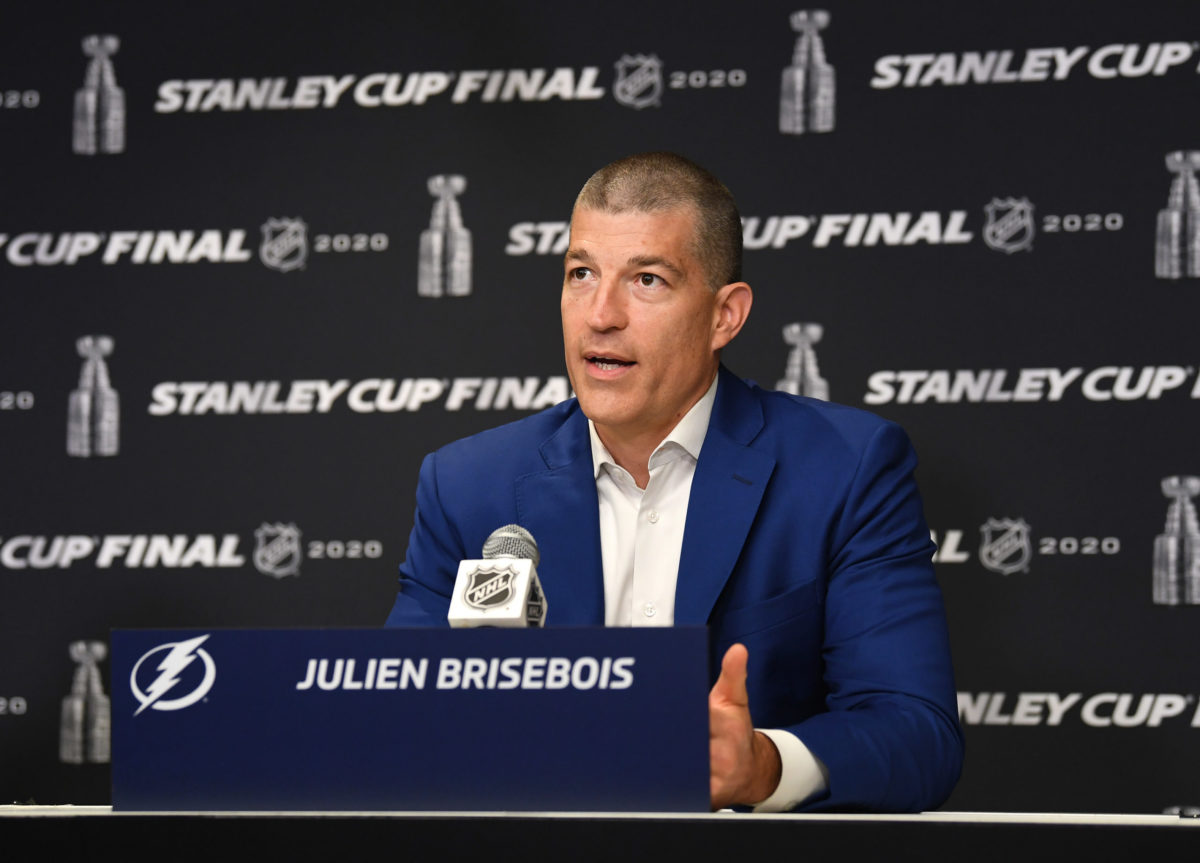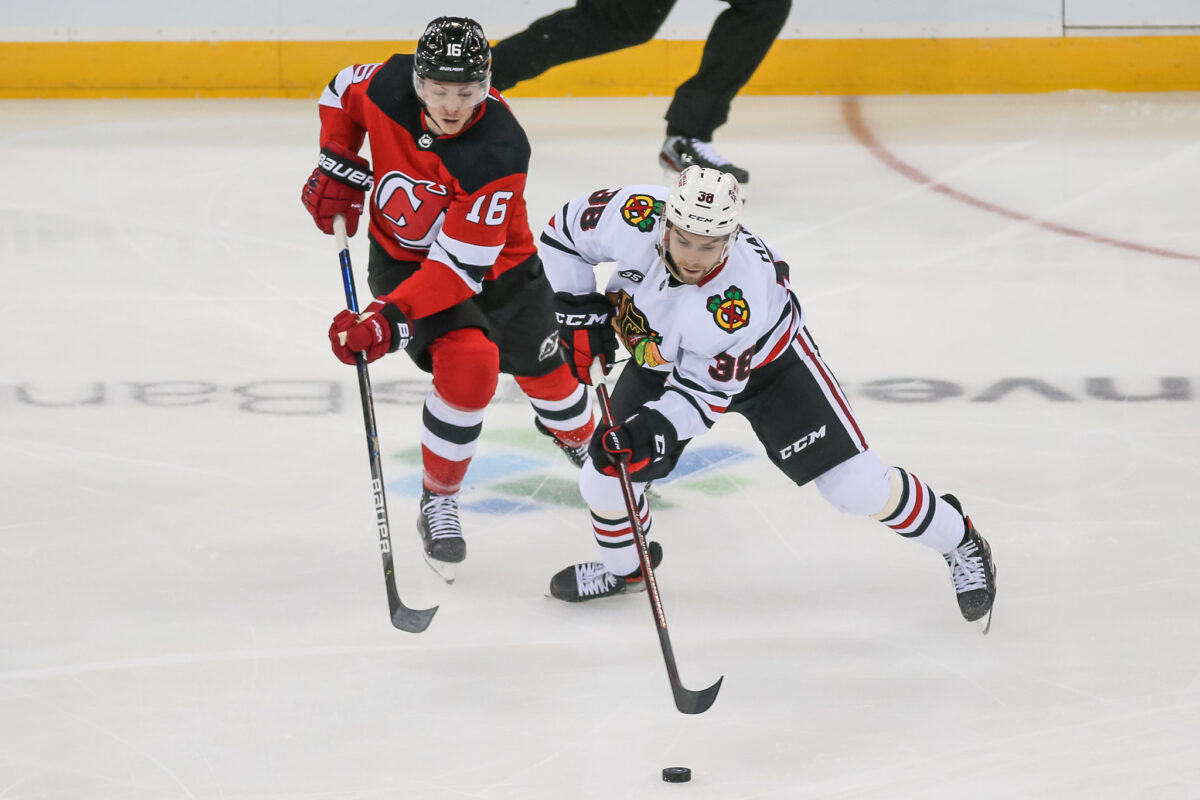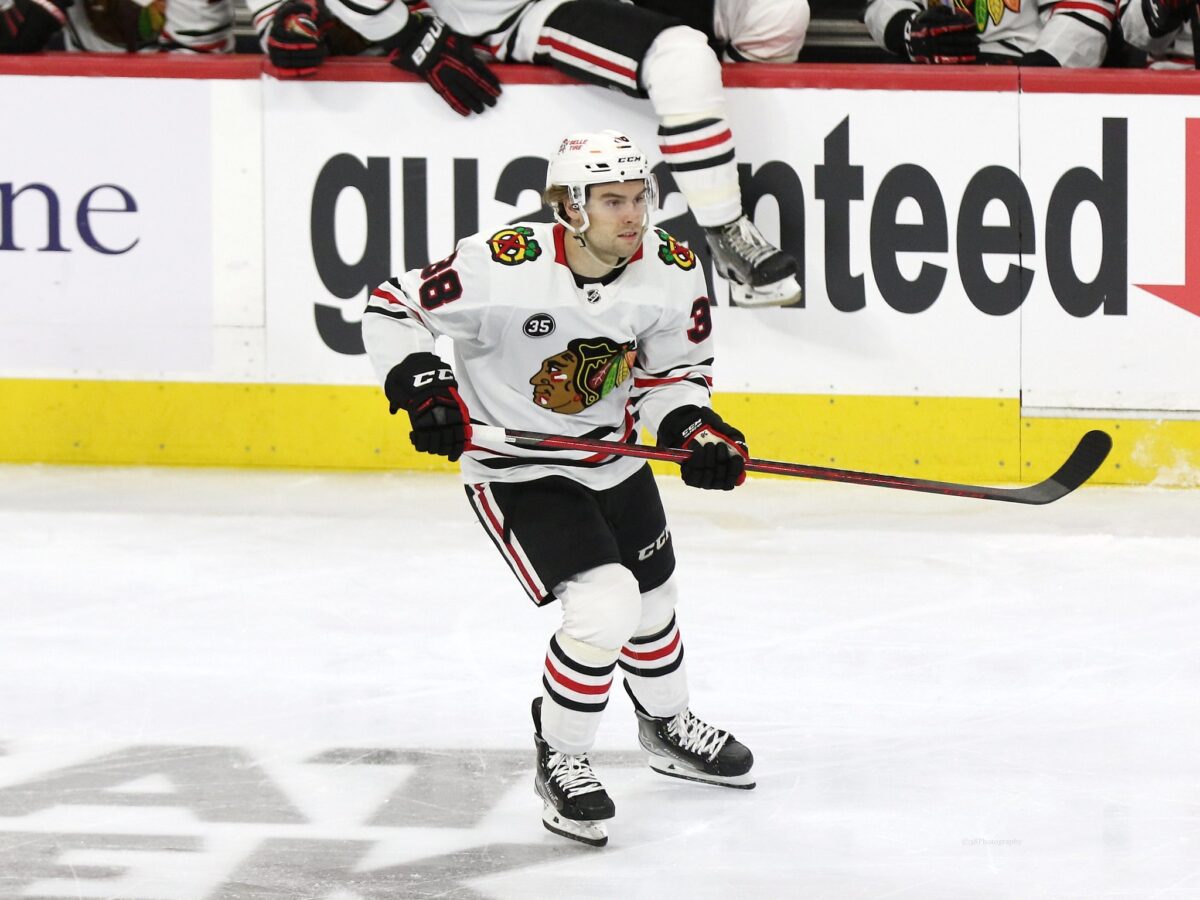In the months and years following the 2020 NHL Trade Deadline, Tampa Bay Lightning general manager Julien BriseBois changed the way that we talk about deadline deals. What was once a time reserved for going all in by picking up veteran players on expiring contracts to beef up your roster for one playoff run has become something different. Now it’s about spending big, oftentimes significantly overpaying, for players on below market value contracts that extend past the current season.

When BriseBois acquired Blake Coleman and Barclay Goodrow, he was initially panned for dealing first-round picks and top-prospects for what appeared to be depth players. However, when you peeled back the layers, you saw that the cost he paid wasn’t just the player they got, but the cap hit they carried into the future. So, he wasn’t giving up future assets just for what these players brought to the ice now, but for the flexibility they gave the franchise over the coming season.
In the salary cap world, this is the way you maximize your contending window. Going all in at the deadline for veteran talent may be a lot of fun, but if you want to consistently win for years, you have to get more than just one good run out of your future assets. You have to find those market inefficiencies that underpay impact players that can help put your roster over the top.
Related: 2022 NHL Trade Deadline: Deal Tracker
Now there is a universe where things didn’t go well for the Lightning with this strategy, as there was no guarantee that Coleman and Goodrow would mesh in Tampa Bay. If that had happened, BriseBois would likely be out of a job now, and the Lightning would be on a list of teams that were great but ultimately disappointed when the lights were brightest.
However, alongside Yanni Gourde, they formed a third-line that won championships, while being some of the most impactful deadline deals in franchise history.
BriseBois Continues Aggressive Trade Deadline Approach
With this backdrop in mind, it makes understanding the Lightning’s blockbuster trade with the Chicago Blackhawks a lot easier to digest. In this deal, Tampa Bay sent Taylor Raddysh, Boris Katchouk, a 2023 first-round pick and a 2024 first-round pick (both conditional) to Chicago for Brandon Hagel, a 2022 fourth-round pick along with a 2024 fourth rounder.
By all measurements, this is a massive trade for both the Lightning and Blackhawks. Few deals involve seven pieces, especially for a player that isn’t an established NHL star.

When you look at this trade through the lens of the 2020 deadline, however, it instantly makes since. In Hagel, the Lightning get a 23-year-old, cost-controlled player with a $1.5 million cap hit until 2024 who is on pace for 25-30 goals and will still be a restricted free agent (RFA) when his current deal expires. In a salary-cap world, every one of those details increased Hagel’s value significantly.
For example, let’s make a comparison. When Tampa Bay acquired Coleman in 2020, he was on pace to score 25 to 30 goals, was making $1.8 million until 2021, and was an unrestricted free agent at the end of his contract which gave the franchise less control over his future. Taking all of this in mind, he brought back an overpayment of afirst and a top-prospect.
With Hagel, you’re getting a younger, cheaper player putting up similar scoring numbers who could be with the franchise for a decade-plus should things go well. This makes it more understandable why BriseBois was willing to part with two first-round picks and two young players to get him, given how much value that has to his team right now.
Lightning’s Additional Returns Matters Significantly in This Trade
It’s also worth noting that the Lightning didn’t just receive Hagel in this trade. Similar to the Goodrow deal, they returned two mid-tier draft picks, meaning that they really just moved down in the draft to get the player they wanted.
Related: Lightning’s 3 Dream Trades That Simply Won’t Happen
While this may be a simplification, for the Lightning, the difference between a draft pick occurring in the late first-round and in the early fourth isn’t that significant. Sure, there is a dropoff in talent between those rounds, but the team has been incredibly success scouting those players and pulling gems out of the rough.
Looking at their current roster, Cal Foote is the only first-round selection since 2013 taking on starting ice time. By contrast, Mathieu Joseph and Ross Colton were fourth-round selections in 2015 and 2016, respectively, meaning that the franchise has found more starters in round four of the draft over the last nine years than in the first.
Lightning Got the Man They Wanted in Hagel
When you put everything together, you start to see the picture BriseBois was looking at when he decided to make this blockbuster trade. Yes, the headlines will rightfully see this as an overpayment and talk about how the Lightning are ‘All In” at the deadline once again, because in the traditional sense, that’s what it looks like.
However, once you peel back the layers, you see that this is a shrewd move by Tampa Bay not just for the 2022 season, but for 2023, 2024, and potentially years beyond. By acquiring Hagel, BriseBois got the exact impact player he needed at a low cap hit that will help him extend his team’s Cup window into the future.

If this strategy works and the Lightning win another Stanley Cup over the next two to three years, it will justify the high cost of this deal. Even if they don’t win it all again, it doesn’t mean that this type of trade is a failure, either, as it is an aggressive and creative use of assets that is not seen in the NHL. Oftentimes, first-round picks can be overvalued for what they can be, and a players’ production on the ice can be undervalued for what it is.
So, to sum it all up, the Lightning didn’t go “All In” at the 2022 Trade Deadline when they acquired Hagel. Instead, they continued to rethink how the NHL approaches deadline deals by overpaying for quality, low-cost players that give the team more control while still adding mid-tier draft picks to their stockpile.
For a team that is a legitimate Stanley Cup contender, these are the sorts of trades you need to make. Yes, they are expensive in the traditional sense, but for the Lightning, it’s a price well worth paying it it extends their window by another year or two.